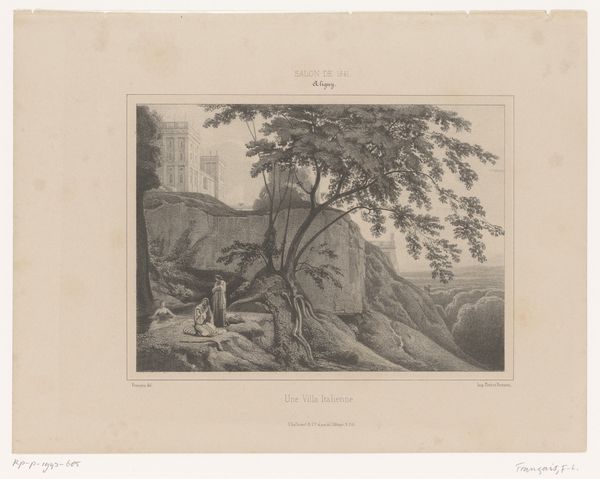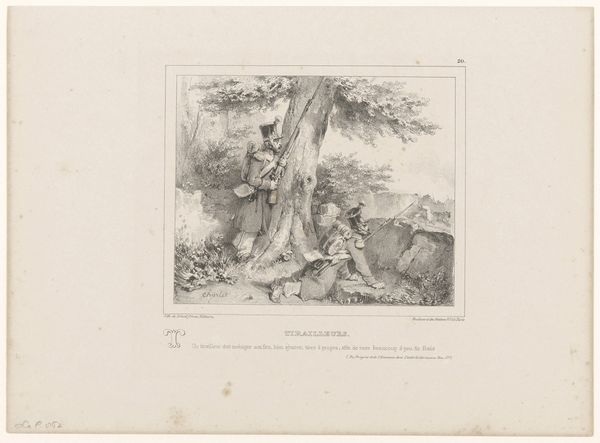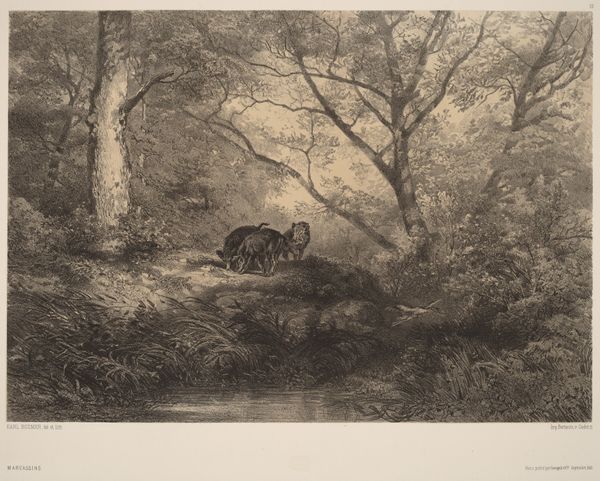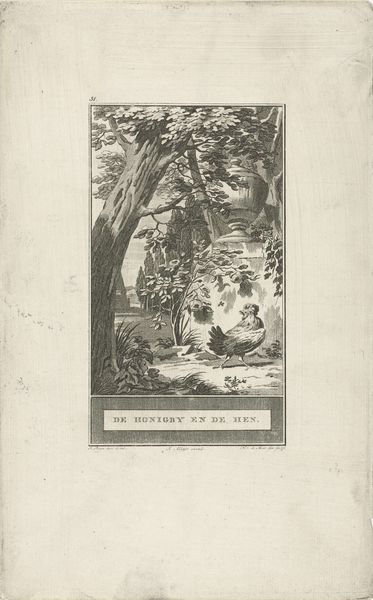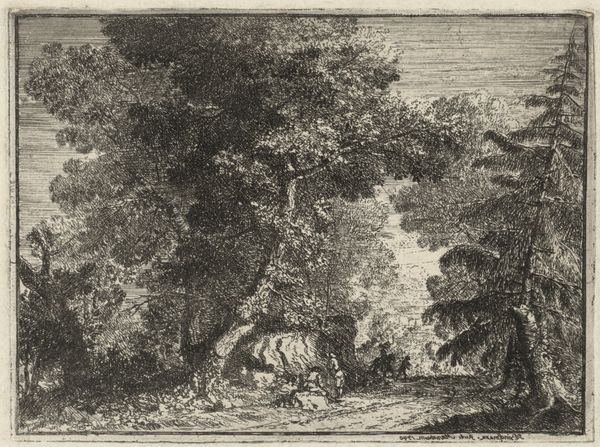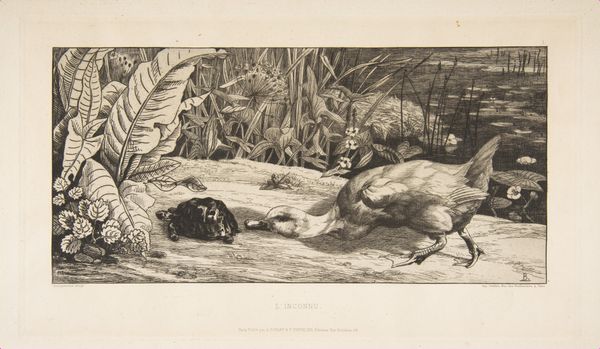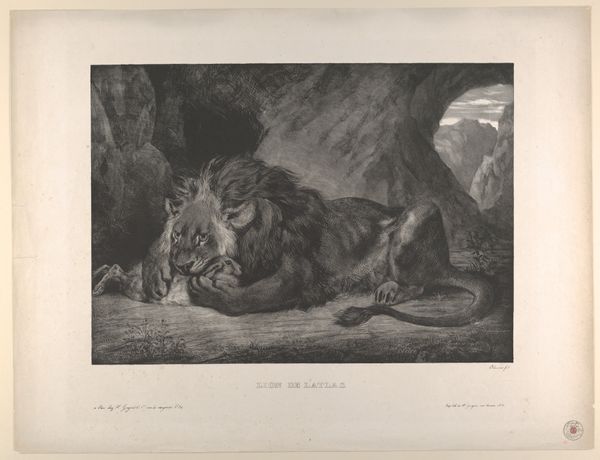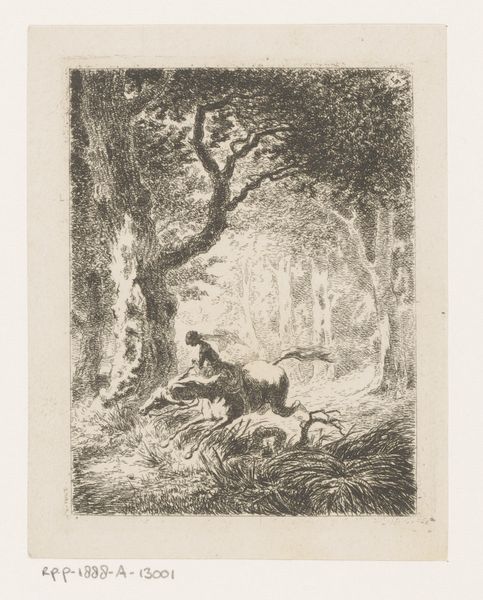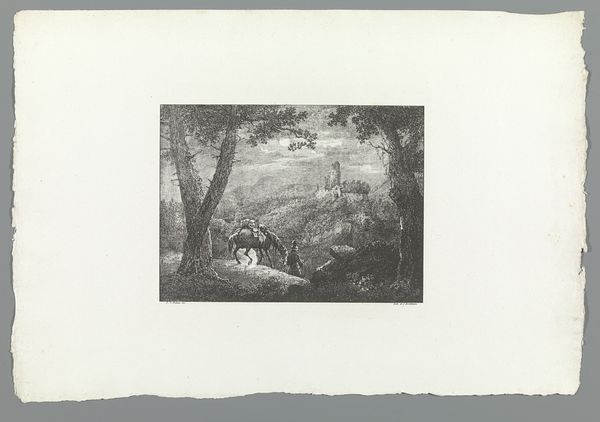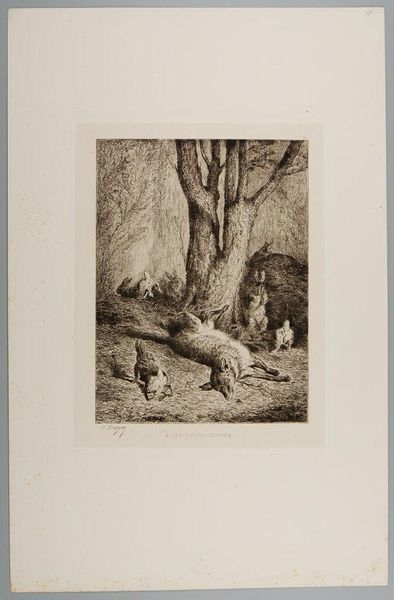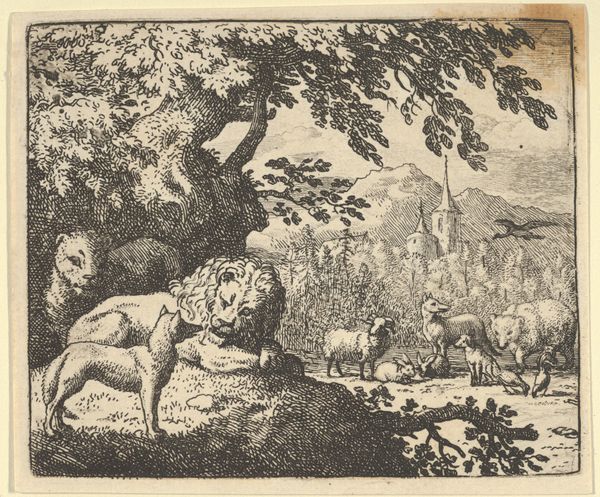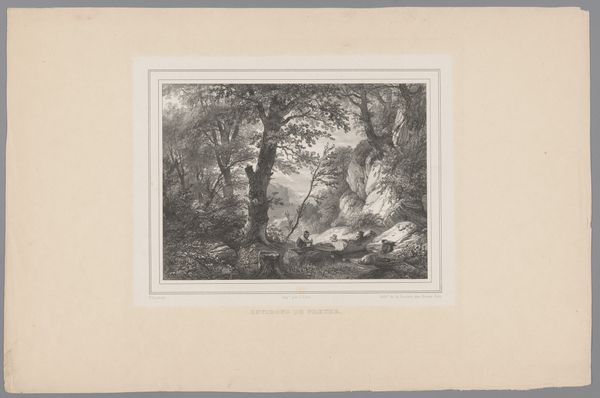
drawing, print, engraving
#
drawing
# print
#
landscape
#
genre-painting
#
history-painting
#
engraving
#
realism
Dimensions: height 230 mm, width 292 mm
Copyright: Rijks Museum: Open Domain
Editor: This is “Man Doodt een Beer,” or “Man Kills a Bear,” by Reinier Vinkeles, made around 1810. It's a black and white print, an engraving actually, and it looks incredibly detailed. It’s also pretty intense; a man is being attacked by a bear while another is trying to shoot it. What strikes you about this piece? Curator: As a materialist, I'm interested in understanding what this engraving, made with specific tools and labor, tells us about early 19th-century Dutch society and its relationship to nature. How do you think the process of engraving influences the way we perceive the scene depicted? Editor: Well, engraving must have taken quite some skill! The level of detail, especially in the trees, suggests a laborious process, so it maybe speaks to the value placed on craftsmanship at the time. But also, that labor… how does it connect with the ‘genre painting’ aspect mentioned in the metadata? Curator: Precisely. Think about it: a print like this wouldn't have been unique, so multiple copies would have been made, widely disseminated, and purchased. We must think about who might consume this imagery and why. Do you see the implications related to the availability of printed images and its social dimension? Editor: Hmm, perhaps that people across different classes would now access such scenes and the romantic ideas that accompany a vision of people fighting for their lives in wild places. That is interesting, I had not thought about that, because of mass-consumption that feels very current. Curator: Right! This print highlights a crucial shift in art production and consumption and provides an insight on the materials used but it speaks also to how the society and labor contexts were intertwined. By recognizing the work involved in production, we recognize the value behind the making, more than just aesthetics. Editor: I am going to try looking more attentively now at the prints to understand their mode of production too.
Comments
No comments
Be the first to comment and join the conversation on the ultimate creative platform.
